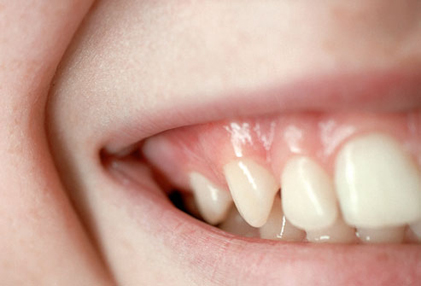Here, you can visualize how important bone space is in placing an implant.
In theory, an implant could take the place of any tooth position in the mouth under ideal conditions. However, not every tooth will be a good candidate for replacement with an implant. The main limiting factors are space, bone size and bone health. For an implant to function properly, there needs to be enough distance between the adjacent teeth so that it can be placed without damaging the roots (which would necessitate both the implant and the tooth to be removed). Additionally, there needs to be ample bone height for the implant to sit in and integrate. This becomes a particular problem on the upper jaw, where the maxillary sinuses can encroach on potential bone space. Finally, the bone needs to be completely healthy. Patients with bone density disorders, recent infection or a history of taking certain medications may not be eligible for an implant.
While we can accommodate a number of conditions with special implant shapes and grafting, there are some instances where placing an implant would be unpredictable or dangerous. In any case, a proper examination (with x-rays) is the only way to determine if you are eligible for a dental implant. If you would like to know more about implants, when we can place them and if you are eligible, please call our office!






















